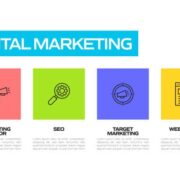LinkedIn Ads can feel like a balancing act between hitting the bullseye and casting too narrow a net. On one hand, you want precision; you’re paying a premium to speak directly to the right people. On the other hand, you don’t want to limit your campaigns so much that they can’t scale or even run properly.
So where’s the sweet spot? And how do you avoid over-targeting or under-targeting your audience?
Here’s how to think about audience size, targeting precision, and what actually matters when structuring high-performing LinkedIn ad campaigns.
Why Precision Feels Safer But Isn’t Always Smarter
Marketers often start by trying to hyper-target. It makes sense: you want your budget focused on decision-makers, at companies that meet your ICP, within industries you know you can serve. And with LinkedIn’s targeting tools, you can get pretty specific.
But too much specificity can backfire. You end up with:
- Audiences too small to deliver effectively (often under 10,000 people)
- Limited reach that causes creative fatigue fast
- CPMs that spike because LinkedIn struggles to find delivery opportunities
Even worse, you miss potential buyers you should be reaching, people who don’t match your “perfect” profile on paper, but still influence decisions or are earlier in the funnel.
Precision helps. But overdoing it suffocates your campaign before it has a chance to learn.
The Risk of Going Too Broad
Of course, the opposite extreme has its own pitfalls. Going too broad might reduce your CPC, but it dilutes your message and muddies your funnel. You may get more impressions, but most of them won’t be relevant. That means low-quality leads, higher cost-per-opportunity, and longer sales cycles.
A broad audience with generic creative often leads to disappointment in reporting. “Lots of clicks” doesn’t mean much when they’re coming from junior roles, unrelated industries, or companies with no buying power.
So yes, broader can be better for awareness. But it should be intentional, not lazy.
LinkedIn’s Targeting Options: Where to Start
LinkedIn offers a ton of targeting levers:
- Job title
- Job function
- Seniority
- Company size
- Company industry
- Skills
- Member interests
- Groups
- Years of experience
- Education
- Custom audiences (retargeting, list uploads, lookalikes)
The trick isn’t choosing the “best” ones; it’s choosing the right combinations based on your campaign’s objective.
Here’s a simplified framework:
For top-of-funnel awareness:
Start broader. Use job function + seniority + company size/industry. This gives you access to relevant personas without narrowing too early. You’re building familiarity, not closing deals.
For middle-funnel content or lead gen:
Narrow down. Add job titles or specific skills to filter for those likely to engage with higher-intent offers like webinars, case studies, or assessments.
For bottom-funnel:
Use retargeting or account lists. These are your high-value audiences—people who’ve already shown interest. At this point, precision makes sense.
Ideal Audience Sizes by Campaign Stage
So what’s the actual number to aim for?
Here’s a general guide:
- TOFU Awareness Campaigns: 100,000–500,000+
- MOFU Content/Lead Gen: 30,000–100,000
- BOFU Retargeting/ABM: 1,000–30,000
Why do these ranges matter? Because LinkedIn’s algorithm needs volume to optimize. If your audience is too small, you may never get enough clicks or conversions for LinkedIn to learn what works.
Using Segmentation Without Over-Slicing
You don’t have to choose between broad and narrow. Smart segmentation allows you to build multiple “wide enough” audiences, each with slightly different messaging or offers.
For example, instead of one generic campaign for “marketing leaders,” you could create three segments:
- CMOs at enterprise SaaS companies
- Directors of Marketing at mid-market B2B firms
- Heads of Demand Gen at agencies
Each one gets a tailored creative. Each one meets the sweet spot between size and precision. And you get much clearer data on what’s actually working.
A Note on Creative Relevance
Even the perfect audience won’t perform if your creative doesn’t speak to them. That’s where LinkedIn ads best practices often fall short. Marketers focus heavily on targeting, but forget that the message has to land with that audience.
Don’t just drop the same PDF download into every campaign. Match the message to the audience’s stage, role, and priorities. What a CMO cares about isn’t what a Marketing Ops Manager wants to hear.
When your targeting and creative are in sync, performance improves, regardless of audience size.
Test, Learn, Adjust
There’s no one-size-fits-all answer. Your sweet spot might look different depending on your product, sales cycle, and budget. The most important thing is to treat targeting like an ongoing experiment, not a one-time setup.
Run A/B tests with two audience types. Monitor CTR, lead quality, and engagement signals. Watch where drop-offs happen. Use that data to refine your audience and your creative in tandem.
Over time, patterns emerge. You’ll learn where the best buyers are hiding and how to reach them at scale, without sacrificing relevance.
Final Thought: Precision Is a Moving Target
Targeting on LinkedIn isn’t about hitting the smallest possible audience; it’s about reaching the most relevant one at the right moment. Some campaigns need scale. Others need specificity. The best results often come from knowing when to lean into each.
It’s not just who you target. It’s how you talk to them. How often do you show up? What you ask of them. And how seamlessly you guide them through the funnel.
When you approach targeting as part of a full strategy, not just a setup checkbox, you unlock LinkedIn’s true potential.
If you want more exciting content, visit. Globallyviz.com














Comments